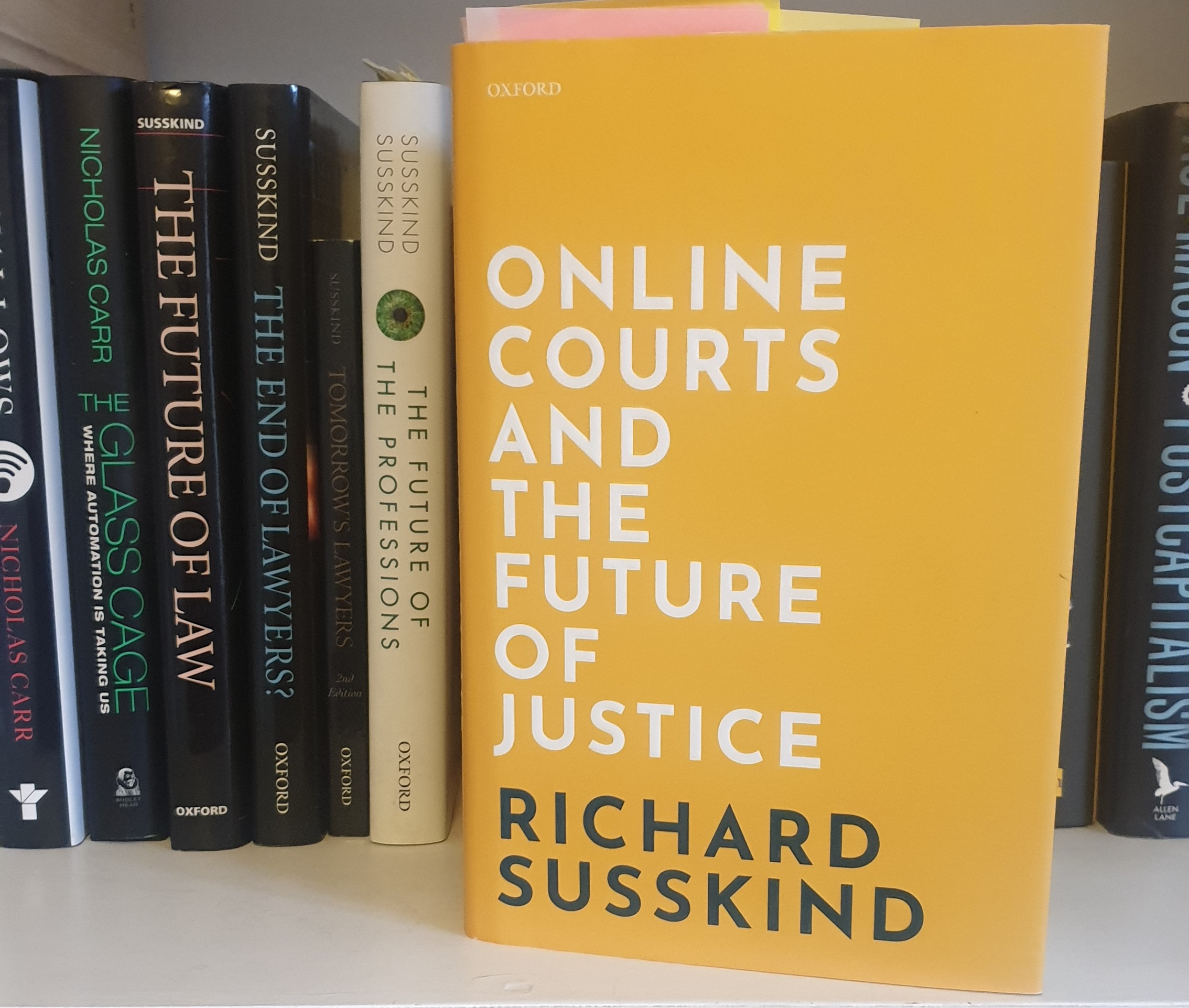
Four years on and Professor Richard Susskind has written the same book he wrote last time, so he says. He jests, yet again. The message and the underlying arguments remain constant; the same analogies are deployed (you know, the drill); but tech has moved on, more is feasible and the vision is developed and refined accordingly. His previous works have covered wide ground: law, lawyers, professions. The narrower focus of this work enables him to treat us to a more extensive, deeper consideration of the subject.
This is not a book about legal technology but an argument for repurposing the justice system to serve more people, employing technologies that are already well established and replacing cumbersome procedures that leave too many denied the justice they deserve.
In Part I Susskind examines the philosophical questions: Why do courts matter? What is a court? and What do we mean by justice and access to justice?
There is some fuzziness around the term “online courts” which can be taken to mean many things. Principally, it may refer to online judging or extended online court services. Richard explores it in both senses.
In considering ways to improve access to justice we should extend our concept of the delivery of justice beyond the resolution of disputes (through court processes) to the containment of disputes (through processes such as ADR) and the avoidance of disputes (through a wider understanding of the law), even to “legal health promotion” (affording access to the opportunities the law creates).
In Part II he sets out his vision for how this will be achieved. This builds on the vision first articulated in the February 2015 report for the ODR Advisory Group which he chaired – Online Dispute for Low Value Civil Claims. The recommendations for establishing “HM Online Court” were soon endorsed by Lord Briggs in his Civil Courts Structure Review and in 2016 in a joint statement by the Lord Chancellor, Lord Chief Justice and Senior President of Tribunals “Transforming our Justice System” which kicked off the courts reform programme currently being pursued by HMCTS.
Susskind argues that we should deploy technology to transform processes rather than simply to automate and improve existing ones. His model is an extended court service comprising three tiers through which cases escalate:
- Dispute avoidance. Assessment/triage via online guidance to establish whether there is a justiciable grievance – a mix of private and government provision.
- Dispute containment. Facilitation by case officers working with the parties in settling disputes; not an alternative but an integral part of the process.
- Dispute resolution. Asynchronous online judging, essentially deciding cases “on the papers alone”. This could mirror existing processes, but moving away from the adversarial model, judges could take “an inquisitorial, problem-solving approach” as in civil law jurisdictions.
The vast majority of cases do not require their day in court.
In Part III he answers the wide range of criticisms ranged against online courts, including that they will be inferior to their bricks and mortar counterparts, that they will lack transparency, not deliver a fair trial and exclude those without digital means or skills.
In Part IV he looks (briefly) to the future – virtual reality, AI, robo-judges and all. None of these technologies is important to his argument but give a taste of what could be.
His concluding chapter is a powerful call to arms. “If their promise is fulfilled, … then the social good that is public dispute resolution will be much more widely distributed across society”. Online courts can bridge “the enormous gulf between knowing ones rights and being able to enforce them” in which space the corrupt, the unsavoury and the powerful have been able to pursue their own ends, and they “will surely change behaviour of those who might otherwise be inclined to disregard the law”.
Nearly half the world’s population live without the protection of the rule of law and in Brazil there is a backlog of 100 million cases waiting for court. Susskind asks us to get behind a program to roll out his vision for online courts globally via a standard, adaptable, global platform.
This is an ambitious goal. How will we get there? Come back in four years to find out!
Reviewed by Nick Holmes, Editor of the Newsletter.
Online Courts and the Future of Justice is published by Oxford University Press, Hardback, 368 pp, £18.99. Also via Amazon. Also on Kindle.